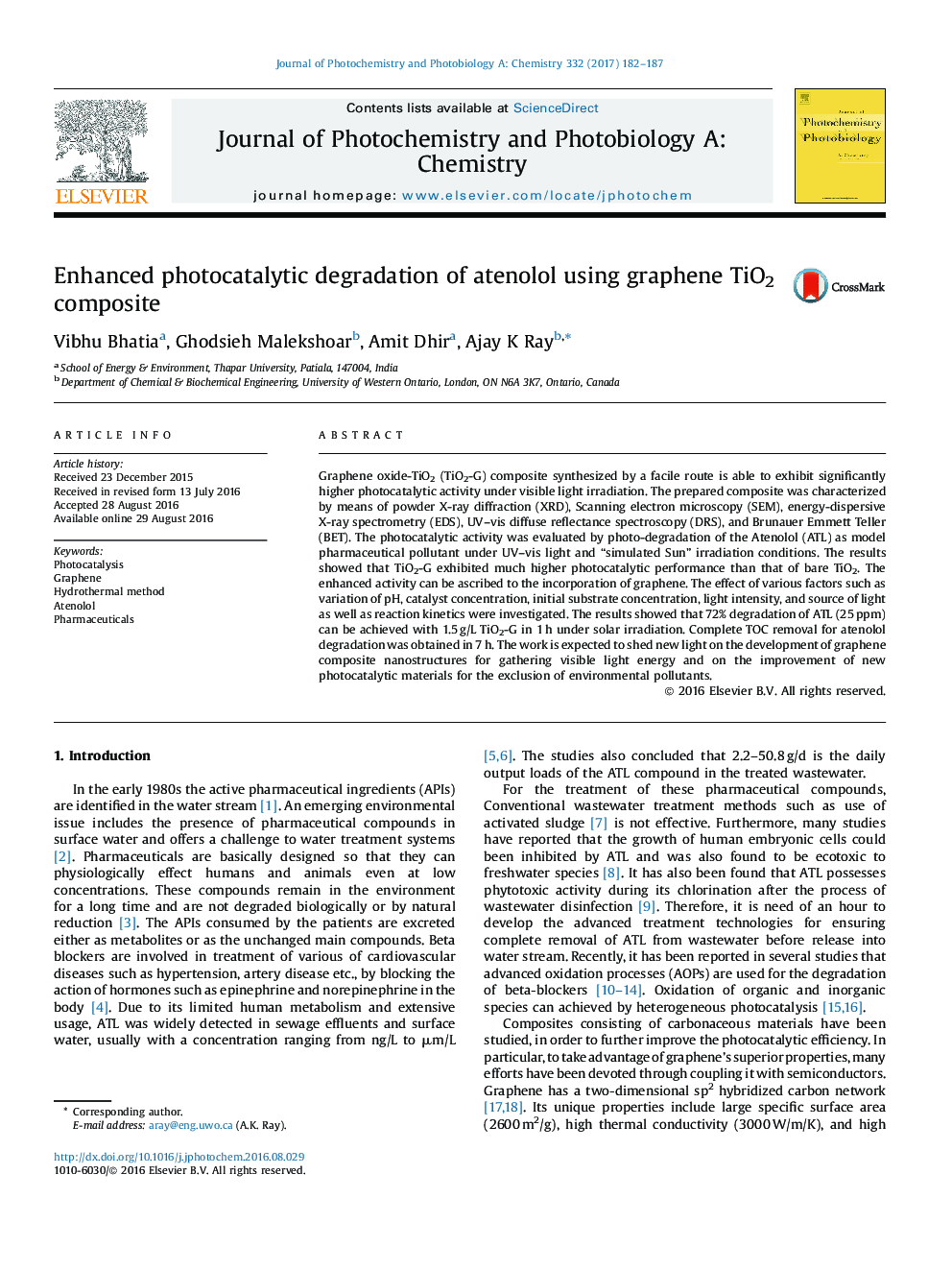| Article ID | Journal | Published Year | Pages | File Type |
|---|---|---|---|---|
| 4754208 | Journal of Photochemistry and Photobiology A: Chemistry | 2017 | 6 Pages |
Abstract
Graphene oxide-TiO2 (TiO2-G) composite synthesized by a facile route is able to exhibit significantly higher photocatalytic activity under visible light irradiation. The prepared composite was characterized by means of powder X-ray diffraction (XRD), Scanning electron microscopy (SEM), energy-dispersive X-ray spectrometry (EDS), UV-vis diffuse reflectance spectroscopy (DRS), and Brunauer Emmett Teller (BET). The photocatalytic activity was evaluated by photo-degradation of the Atenolol (ATL) as model pharmaceutical pollutant under UV-vis light and “simulated Sun” irradiation conditions. The results showed that TiO2-G exhibited much higher photocatalytic performance than that of bare TiO2. The enhanced activity can be ascribed to the incorporation of graphene. The effect of various factors such as variation of pH, catalyst concentration, initial substrate concentration, light intensity, and source of light as well as reaction kinetics were investigated. The results showed that 72% degradation of ATL (25Â ppm) can be achieved with 1.5Â g/L TiO2-G in 1Â h under solar irradiation. Complete TOC removal for atenolol degradation was obtained in 7Â h. The work is expected to shed new light on the development of graphene composite nanostructures for gathering visible light energy and on the improvement of new photocatalytic materials for the exclusion of environmental pollutants.
Related Topics
Physical Sciences and Engineering
Chemical Engineering
Bioengineering
Authors
Vibhu Bhatia, Ghodsieh Malekshoar, Amit Dhir, Ajay K Ray,
